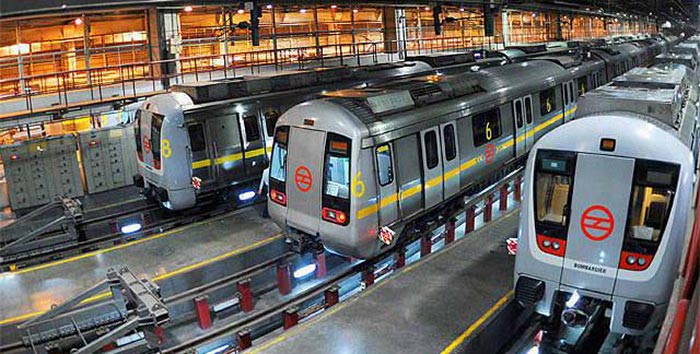Finance, sustainability, technology, productivity, collaboration – the combination of these factors are producing enormous pressures and opportunities in the life-cycle of rail depots.
Customer service expectations have risen in the last 20 years and yet the way we approach Depot design and management hasn’t changed greatly. We fail to utilise the lessons of the past when project over-runs and escalating costs deliver a finished product that does not always fully meet customer, employee and investor needs.
The need to reduce operating costs over the 30-50 year life-span of a depot is critical. Looking at the Whole-Life Costs of a train, in very broad terms 25% is needed to acquire the train and 75% for the construction and operation of the depot. Ironically, the area that needs the most money has the least visibility – everyone loves new trains but few talk about the depots that are essential to maintaining and operating them.
Building a depot that assures the opportunity to maximise train availability, quality and value should be the Rail Industry’s top requirement. To do this we need to be ‘Working Smart’.
We consider three key areas: the way we operate Asset Management, the way we integrate and utilise new technology and how we create the optimum working environment.
Working smart
The new ISO 55000, Asset Management, is a guide and indicator as to how coordinated activity should realise value from any entity and potentially provide value to the organisation. Skilled labour is a major cost in depots. Working conditions are critical to productivity. Land is always at a premium, so we need to find ways to use it more efficiently.
Many standard activities can be undertaken by machines, freeing up skilled workers for tasks that require management thinking and planning, in an environment that is more efficient, flexible and safer. This would change the familiar structural layouts, something that requires development.
Technology
In maintenance, there are 3 major opportunities:
First, machine-to-machine monitoring
Advance warning saves time and money and M2M technology delivers this capability. The industry has and is developing applications that send data from the train in transit and other infrastructure to the depot so the maintenance team know what to expect. The ability to immediately identify and source the required defect work is key to the turn-round – the same way a pit stop team works in a Formula 1 race. Innovation in this area is required.
We are heavily involved at the new Crossrail Train Depot. On site, we are making extensive use of monitoring systems including decision support software to report on absolute wear limits, trend anomalies or urgent system defects, trend analysis and component life cycle analysis. There is more that can be done.
Second, process optimisation
We need to increase digital, automation and technical innovation and offer new and better solutions to operators that deliver operational benefits and reduce costs. For instance, Automatic Train Operation is installed on all new trains and could be fully used in depots. Combined with on-board guidance software, way-side equipment sensors and DPPS, it would improve speed and precision when positioning a train whilst meeting safety requirements.
Third, robotics
Robotics can carry out inspections remotely, record and transmit picture information and when used alongside telemetry, laser and other specialist equipment do most of what is done by people, both under and inside trains.
Together, these technologies could significantly reduce turn-around time and costs.
Collaboration & Sustainability
Better collaboration and integration of ideas, especially at the start, makes a major difference in ensuring a depot project is successful and sustainable.
It also supports the workforce. A depot is an open site, it gets cold and hot and people need to work within specific temperature ranges. Under-floor heating and cooling is a proven technology that is not yet exploited in large scale industrial floor areas in the UK. The one exception is the new Crossrail depot mentioned earlier where the whole of the building area has this heating and cooling facility. Whole life costings show a significant saving over traditional energy arrangements. National Grid reports that in the UK, solar panels have produced over 24% of the electricity being used at one time. With large roof spaces, solar energy, including Photovoltaics and solar panels aligned with ground or air to heat sources, Combined Heat Power Plants and LED lighting is an obvious choice – with lower emissions too.
Today, we all need to justify what we’re doing, plan it fully and ensure value. I believe we have to overcome any emotional resistance to change and new technology and collaborate on ideas, institute the necessary R&D and find ways of working that can move rail depots towards self-sufficiency and increased profitability. Leadership and culture will play a part and now would be a good time to really mobilise the effort.
